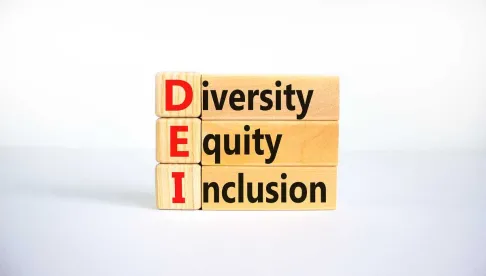“The most powerful leadership tool you have is your own personal example.” John Wooden
Boards play a pivotal role in establishing an organization that champions, highlights, and capitalizes on diversity, inclusion and equity. Boards must be mindful of how they present themselves. The growing climate of intolerance that has come to light over the last few years has made it clear that there is a leadership imperative to face the issues of inequities within the communities served. Divisions among economic, racial, religious, and political lines have created an increasingly polarized populace in need of reinvigoration. Thorny issues and tumultuous undercurrents at the intersection of matters implicating race, gender, and sexuality call for profound reflection as we seek to understand one another.
Board leadership on this point matters. Boards can expand intentionally their thinking on this point with training. While increased diversity on boards is an important goal and furthers the ability of a board to address these increasing challenges, the reality is that many companies are struggling to make progress in that regard. Even if board diversity requirements are not currently mandated yet (as in California and Washington), diversity, inclusion and equity training can help board leaders and executives become more culturally competent, empathetic, and self-aware. For these reasons board diversity and inclusion training should be a top priority.
Responsible board members spend time working diligently to understand both historical and current disparities, injustices, and inequities in order to strive for continuous improvement. Participating in diversity, inclusion, and equity training and engaging in open discussions about implicit bias can give board members insight in helping organizations understand the context in which they work and how to best prioritize resources and strategies based on these realities. Awareness of systemic inequities can enable a board to develop the mental muscle to help the organization served avoid and overcome blind spots that produce flawed strategies and, instead, create powerful opportunities to deepen the organization’s impact, relevance, and advancement.
In 2021, 78% of newly elected board directors were white. As an initial matter, boards take many approaches to assembling a diverse and inclusive group of directors. Training can eradicate the myth that there are not enough qualified diverse candidates to fill board seats. To diversify board members, board searches must diversify the search for candidates. This may require movement beyond the traditional practice of board recruitment, such as looking within the inner circles of those currently on the board. Casting a wider net, expanding the search to include not-for-profit or government candidates as prospective for-profit corporate board members, looking at MBA programs, executive leadership programs, and professional associations, and academic executives from local colleges and universities, can help a board tap into varied perspectives, identities, and life experiences that might prove to be a welcomed and celebrated addition to a board.
Tracking and measuring diversity, inclusion and equity efforts with an action plan can help maintain focus on achieving goals. Assigning this work to a board committee with planning and oversight responsibility can be very effective. An extended commitment to diversity, equity, and inclusion is key, as this work is not accomplished through a one-session training. Accountability reviews can help a board stay the course on this front.
Diversity brings value. The effort is worthwhile, as decisions reached from a diverse group are more likely to be superior to those from homogeneous groups. At the end of the day, boards need diversity of thought.




 />i
/>i

